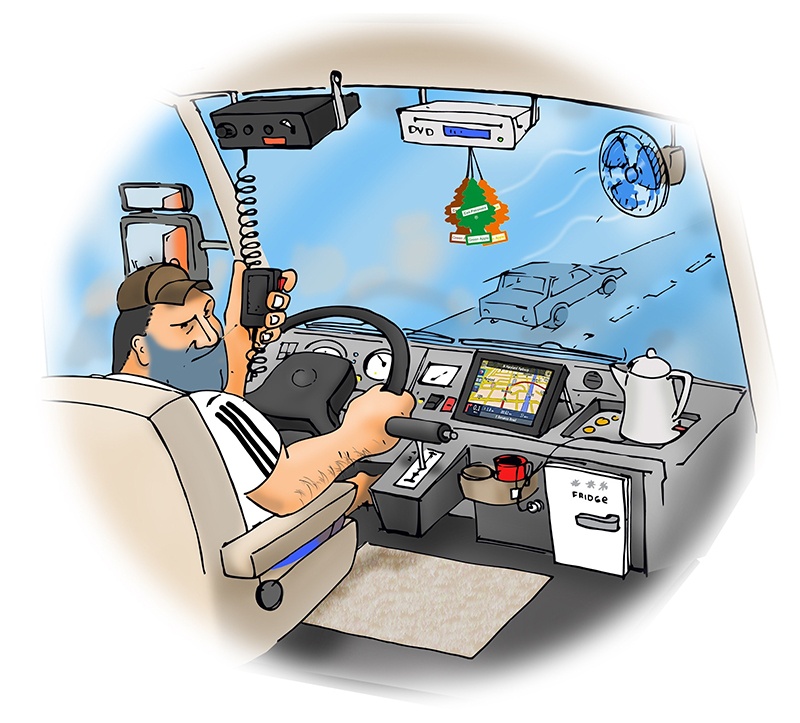Do's & Don'ts of Commercial Motor Vehicle Drivers Using a Mobile Device
The Federal Motor Carrier Safety Administration (FMCSA) restricts the use of all hand-held mobile devices by drivers of commercial motor vehicles (DMVs). Here's what you need to know:
 |
Push-to-talk over cellular (POC) is quickly replacing radio communications in a variety of industries - especially in transportation and logistics as it provides a cost-efficient solution to replace mobile radios in trucks. However, when operating a Commercial Motor Vehicle drivers are not only required to abide local and state legislation, but also those rules set out by the U.S. Department of Transportation’s Federal Motor Carrier Safety Administration (FMCSA). |
The FMCSA commissioned research into the use of mobile phones by commercial motor vehicle drivers. The findings revealed that the risk of being involved in a safety-critical event such as a crash or lane deviation increases six times for those who engage in dialling a mobile device while driving. As a result, in 2012, the FMCSA enacted mobile device restrictions for commercial drivers. Under these new rules, using a mobile device is defined as:
- Using at least one hand-to-hold a mobile phone to make a call
- Dialing a mobile phone when more than one button must be pressed
- Reaching for a mobile phone in a manner that requires one to move from a seated position while properly restrained by a seatbelt
While it may be tempting to use a mobile device while driving in order to save time or address an urgent matter, the disadvantages far outweigh the benefits. Not only are drivers subject to fines and legal action per local and state laws, but commercial motor vehicle drivers may also be fined up to $2750 by the FMCSA. Multiple infractions may even result in the disqualification of a driver by the FMCSA or even loss of commercial driver’s license.
Read: "FMCSA Fact Sheet No Call, No Text, No Ticket!"
Companies who employ commercial motor vehicle drivers are also bound by these new FMCSA rules, as they are subject to fines of up to $11,000 for requiring or allowing drivers to operate mobile devices while driving.
Though using a handheld device while driving holds many risks, it does not discount the importance for commercial motor vehicle drivers to be in communication while driving. So what can be done to mitigate potential hazards?
Firstly, keeping a mobile device within close reach will prevent the need for a driver to remove his or her eyes from the road while driving. Secondly, using voice activated dialing, headsets, and hands-free features are also beneficial to allow drivers to safely talk while driving.
Are you interested in a FMCSA Compliant Solution?
Savox Communications has created the new Promate MobileRSM® as the perfect option for commercial drivers who need to be in contact while on the road. Designed to meet the unique needs of transportation and logistics companies, the Promate MobileRSM® is a wired vehicle speaker microphone which offers an extra-long cable and extra-loud speaker output, allowing drivers to continue to communicate while walking around their vehicle. Compliant with Department of Transportation FMCSA regulations, the Savox Promate MobileRSM® was created to be used in conjunction with a tablet or smartphone, and allows for push-to-talk functionality in order to minimize the time a driver’s eyes are off the road. Unlike other solutions on the market, the Promate MobileRSM™ was designed with commercial drivers’ specific needs in mind, and is a simple yet sophisticated tool for fleet management. Read the Savox blog, "FAQ's for Transportation & Logistics using the new Savox Remote Speaker Microphone"
For more information on the Promate MobileRSM®, or other Savox radio accessories, visit www.savox.com or contact your Sales Representative.
Subcribe to our blog
Be among the first of your peers to hear about the new products and solutions from Savox.


